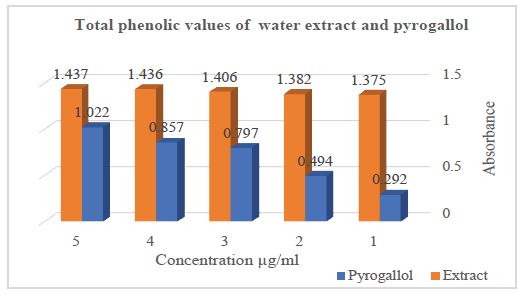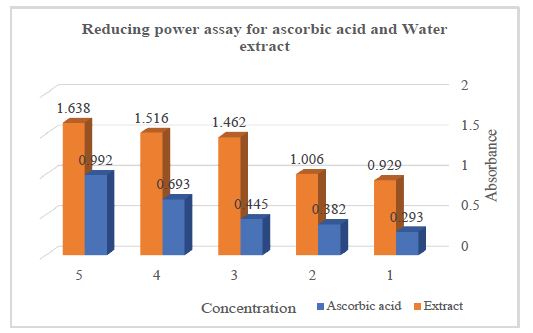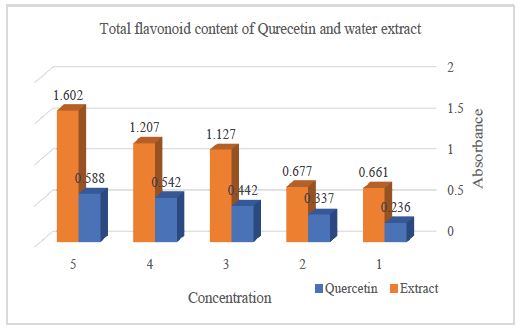Journal Name: Journal of Biomedical Research and Reviews
Article Type: Research
Received date: 12-October-2021
Accepted date: 21-December-2021
Published date: 28-December-2021
Citation:Aali NME, Shahwan A, Layas YF, Tumi SGE (2021) Antioxidant Activities of Rhubarb (Rheum emodi): Total Phenolic, Flavonoids Content and Reducing Ability. J Biomed Res Rev Vol: 4, Issu: 2. (09-12).
Copyright:© 2021 Aali NME et al. This is an openaccess article distributed under the terms of the Creative Commons Attribution License, which permits unrestricted use, distribution, and reproduction in any medium, provided the original author and source are credited.
Abstract
Medicinal plants have varying natural products and number of antioxidants. Antioxidants play a principle role to protect damage caused by oxidative stress (OS), Rheum emodi is not an exception, in which it is reported to have compounds that possess antioxidant activity, like polyphenolic compounds. In addition, other compounds have proven to have antidiabetic, antimicrobial, antifungal, antioxidant, hepatoprotective and nephroprotective activities. The aim of this study was to quantify water extract of powdered plant of Rheum emodi to display potent antioxidant activity. Total phenolic, total flavonoid contents and reducing ability were measured in order to find possible sources for future novel antioxidants in plants. Folin–Ciocalteu colorimetric method was used to identify the total phenolic compounds, pyrogallol was used as standard and the samples were measured at 765 nm. Total flavonoid content was calculated by aluminum chloride colorimetric assay, Quercetin was used as standard, and the absorbance was measured at 510 nm. Reducing power assay was determined by Oyaizu colorimetric method using Ascorbic acid as standard, and various concentrations of the water extract were measured at 700nm standard. Data from present results revealed that Rheum emodi act as an antioxidant agent due to its free radical scavenging and antioxidant activity.
Keywords
Oxidative stress, Rheum emodi, Antioxidant, Total phenolic, Total flavonoid, Reducing power.
Abstract
Medicinal plants have varying natural products and number of antioxidants. Antioxidants play a principle role to protect damage caused by oxidative stress (OS), Rheum emodi is not an exception, in which it is reported to have compounds that possess antioxidant activity, like polyphenolic compounds. In addition, other compounds have proven to have antidiabetic, antimicrobial, antifungal, antioxidant, hepatoprotective and nephroprotective activities. The aim of this study was to quantify water extract of powdered plant of Rheum emodi to display potent antioxidant activity. Total phenolic, total flavonoid contents and reducing ability were measured in order to find possible sources for future novel antioxidants in plants. Folin–Ciocalteu colorimetric method was used to identify the total phenolic compounds, pyrogallol was used as standard and the samples were measured at 765 nm. Total flavonoid content was calculated by aluminum chloride colorimetric assay, Quercetin was used as standard, and the absorbance was measured at 510 nm. Reducing power assay was determined by Oyaizu colorimetric method using Ascorbic acid as standard, and various concentrations of the water extract were measured at 700nm standard. Data from present results revealed that Rheum emodi act as an antioxidant agent due to its free radical scavenging and antioxidant activity.
Keywords
Oxidative stress, Rheum emodi, Antioxidant, Total phenolic, Total flavonoid, Reducing power.
Introduction
Changing the equilibrium between activated oxygen species (ROS) and antioxidant found in the body can cause oxidative stress that further more will cause chronic disease [1,2]. All biological systems have antioxidant defense mechanism that protect the body against free radicals, but somtimes this system is insufficient, and the immune system cannot reduce the free radicals alone, for that external antioxidant supplement is needed [1-3]. Butylated hydroxyanisole (BHA) and butylated hydroxytoluene (BHT) have been used as antioxidants but due to their toxicity, and DNA damage their usage was rusticated [4]. Lately floral resources with strong antioxidant and low toxicity have been used [3,4]. Rheum emodi is one of the plants that has been used as antioxidant because of its Scavenging Activities possessed from its phytochemical constituents [5].
Rheum emodi, it has also been known by the name rhubarb, this plant belongs to Polygonaceae family, Rheum genus and it is species called R. emodi [6]. Rheum emodi is widely distributed in China, Nepal and India [7]. It is also endemic in western and central Himalayan region [6]. According to the folk medicine, Rheum emodi is used to treat many diseases.
According to the different constituents isolated from Rheum emodi, we can predict way it is used to treat a specific disease. For example, anthraquinone and phytosterol give Rheum emodi anti-inflammatory activity and antihyperglycemic activity respectively, flavonoid and phenolic glycosides that they work as cardioprotective and antihyperlipidemic respectively [6,8,9]. Along with these compound Rheum emodi has antioxidant and cytotoxic activities that might be also responsible for these therapeutic properties as well as its antimicrobial activity [5,10]. Other phytochemicals that have been identifies are anthrones c-glycoside, stilbenes, oxanthrone, ethers, ester, lignans, carbohydrate and oxalic acid. In addition, naphthoquinones, rutin, rheinal, rhein 11-O-b-D-glucoside, torachrysone 8-O-b- D-glucoside, epicatechin, auronols (carpusin and maesopsin), the sulfated anthraquinone glycoside sulfemodin 8-O-b-Dglucoside, b-asarone and some stilbene compounds (e.g., rhaponticin) have also been isolated [5,6,8].
When this plant is used traditionally, it is mostly socked in water and apportion is given to the patients, for that the aim of this study is to determine the scientific basis of traditional uses of Rheum emodi. Evaluation of the antioxidant activity, phenolic and Flavonoid content of the water extract of the whole plant and compare it with references
Materials and Methods
Plant Collection and Identification: The plant was collected from Libyan markets and identified in the botany department in Benghazi University.
Chemicals: Ethyl acetate, copper sulfate, ascorbic acid and monobasic dihydrogen phosphate were obtained from Merck Company, ferric chloride, sodium nitrite; aluminum chloride, sodium Chloride and sodium carbonate were obtained from Farmitalia Carloerba. Dibasic monohydrogen phosphate, trichloro acetic acid and sodium hydroxide were obtained from Redeal De Haennagtca. Potassium ferricyanide was obtained from NICE Company.
Preparation of the leaf extract: 20 g of the powdered plant were added to 125 mL distilled water in 250 ml flask then heated in a water bath at 70°C for 20 min. Biomass of plant is separated through Whatman No.1 filter paper and was concentrated with a rotary evaporator.
Total Phenolic content: The total phenolic content was determined using colorimetric method according to Singleton et al. in 1999. To an aliquot of Rheum emodi water extract, 2 ml of de-ionized water were added and mixed with “600” μl of Folin-Cicalteau reagent and 2 ml of 20% sodium carbonate. The tubes were kept at boiling water bath for 1 min, after cooling the blue color formed measured at 765 nm by Aquarins (CE700) spectrophotometer Cecil instruments [11].
Reducing power assay: This assay was determined according to the method of Oyaizu (1986). Five different samples of Rheum emodi water extract were mixed with 2.5 ml of (0.2 M, pH 6.6) sodium phosphate buffer, and 2.5 ml of 1% potassium ferricyanide [K3Fe(CN)6], then the mixture was incubated at 50°C for 20 minutes. 2.5 ml of 10% trichloroacetic acid (w/v) were added, the mixture was then centrifuged at 1000 rpm for 8 min (Centorion K24OR-2003 refrigerated centrifuge). The upper layer (5 ml) was mixed with 5 ml of de-ionised water and 1 ml of 0.1% of ferric chloride, and the absorbance was measured spectrophotometrically at 700 nm.
Figure 1: Total phenolic values of water extract and pyrogallol.
Figure 2: Reducing power assay for ascorbic acid and water extract.
Figure 3:Total flavonoid content of Qurecetin and water extract.
Table 1: Total phenolic cotenant for pyrogallol and Rheum emodi water extract.
| Mean ± Standard Deviation | ||
|---|---|---|
| Conc."μg/ml" | Pyrogallol | Extract |
| 100 | 0.292 ± 0.005 | 1.375 ± 0.021 |
| 200 | 0.494 ± 0.003 | 1.382 ± 0.012 |
| 300 | 0.797 ± 0.007 | 1.406 ± 0.001 |
| 400 | 0.857 ± 0.002 | 1.436 ± 0.001 |
| 500 | 1.022 ± 0.005 | 1.437 ± 0.006 |
Table 2: Reducing power assay for ascorbic acid and Rheum emodi water extract.
| Mean ± Standard Deviation | ||
|---|---|---|
| Conc."μg/ml" | Ascorbic acid | Extract |
| 100 | 0.293 ± 0.012 | 0.929 ± 0.004 |
| 200 | 0.382 ± 0.032 | 1.006 ± 0.004 |
| 300 | 0.445 ± 0.008 | 1.462 ± 0.001 |
| 400 | 0.693 ± 0.10 | 1.516 ± 0.004 |
| 500 | 0.992 ± 0.005 | 1.638 ± 0.009 |
Table 3:Total flavonoid content of Qurecetin and Rheum emodi water extract..
| Mean ± Standard Deviation | ||
|---|---|---|
| Conc."μg/ml" | Quercetin | Extract |
| 100 | 0.236 ±0.003 | 0.661 ± 0.079 |
| 200 | 0.337 ±0.026 | 0.677 ± 0.084 |
| 300 | 0.442 ±0.087 | 1.127 ± 0.089 |
| 400 | 0.542 ±0.004 | 1.207 ± 0.039 |
| 500 | 0.588 ±0.006 | 1.602 ± 0.046 |
Total Flavonoid Content: Aluminum chloride colorimetric technic was used to determine total flavonoid content. 4ml of de-ionized water was added to Five different samples of Rheum emodi water extract, then 0.3 ml of 5% sodium nitrite solution were added followed by 0.3 ml of 10% aluminum chloride solution. The mixture was incubated at ambient temperature for 5 min, and then 2 ml of 1 M sodium hydroxide were added to the mixture. Immediately, the volume of reaction mixture was made to 10 ml with deionized water. The absorbance of the developed pink color was determined at 510 nm.
Result and Discussion
Total Phenolic content: TFC was estimated by (F.C) reagent, in which, phenolates are oxidized by F.C which lead to the production of complex molybdenum-tungsten blue, this can be detected spectrophotometrically at 765 nm [12]. For the Rheum emodi water extraxt, the amount of phenolic content was compared to Pyrogallol, which is a highly phenolic natural compound and was significantly higher in our sample and this mean that Rheum emodi has high content of phenolic compounds that is one of the reason of its therapeutic properties.
Reducing Power assay: The presence of reducers (i.e. antioxidants) causes the conversion of the Fe+3 ferricyanide complex used in this method to the Fe+2/ferrous form, and as a result of that, we can measure Perl’s Prussian blue formation at 700 nm. In which, higher absorbance denotes the presence of higher reducing power [13]. All data were compared to Ascorbic acid, which has high reducing power ability and the result shows high reducing power assay for our sample. In which 100 ppm of our extract has almost the same Ferric reducing antioxidant assay of 500 ppm of the ascorbic acid. This higher amount of reductone, which could react with free radicals to stabilize and terminate radical chain reactions indicates that the Rheum emodi water extract contain high amount of flavonoids and polyphenols.
Total Flavonoid content: TF was determined by reaction with sodium nitrite, colored flavonoid-aluminum complex was produced using aluminum chloride. The colored complex was detected by spectrophotometer at 510 nm [13-15]. All data were compared to Quercetin, which is a flavonoid natural standard and the result shows a higher flavonoid content for the water extract of Rheum emodi.
Conclusion
The antioxidant activity of Rheum emodi water extract was confirmed by three experiment, which are total phenolic content, reducing power assay and total flavonoids content. The result showed amounts of 1.437 ± 0.006, 1.638 ± 0.009, 1.602 ± 0.046 at concentration of 500 μg/ml for the three experiment respectively with a result higher than the standard used in the experiments which mean that Rheum emodi water extract can be used for free radical scavenging. Further antimicrobial studies are needed.
Khan MA, Rahman AA, Islam S, Khandokhar P, Parvin S, et al. (2013) A comparative study on the antioxidant activity of methanolic extracts from different parts of Morus alba L. (Moraceae). BMC Research Notes 6: 24. [ Ref ]
Ighodaro OM, Akinloye OA (2018) First line defence antioxidants-superoxide dismutase (SOD), catalase (CAT) and glutathione peroxidase (GPX): Their fundamental role in the entire antioxidant defence grid. Alexandria Journal of Medicine 54: 287-293. [ Ref ]
Zargoosh Z, Ghavam M, Bacchetta G, Tavili A (2019) Effects of ecological factors on the antioxidant potential and total phenol content of Scrophularia striata Boiss. Scientific Reports 9: 1-15. [ Ref ]
Zargar BA, Masoodi MH, Ahmed B, Ganie SA (2011) Phytoconstituents and therapeutic uses of Rheum emodi wall. ex Meissn. Food Chemistry 128: 585- 589. [ Ref ]
Chai YY, Wang F, Li Y, Liu K, Xu H (2012) Antioxidant activities of stilbenoids from Rheum emodi Wall. Evidence-Based Complementary and Alternative Medicine. [ Ref ]
Singh R, Tiwari T, Chaturvedi P (2017) Rheum emodi Wall ex. meissn (Indian Rhubarb): Highly endangered medicinal herb. Journal of Medicinal Plants Studies 5: 13-16. [ Ref ]
Tayade A, Dhar P, Ballabh B, Kumar R, Chaurasia OP, et al. (2012) Rheum webbianum royle: A potential medicinal plant from trans-himalayan cold deserts of Ladakh, India. Plant Archives 12: 603-606. [ Ref ]
Hu L, Chen NN, Hu Q, Yang C, Yang QS, et al. (2014) An unusual piceatannol dimer from rheum austral D. Don with antioxidant activity. Molecules 19: 11453-11464. [ Ref ]
Kusmardiyani S, Novita G, Fidrianny I (2016) Antioxidant activities from various extracts of different parts of kelakai (Stenochlaena palustris) grown in central Kalimantan - Indonesia. Asian Journal of Pharmaceutical and Clinical Research 9: 215-219. [ Ref ]
Singh PP, Ambika, Chauhan SMS (2013) Activity-guided isolation of antioxidants from the roots of Rheum emodi. Natural Product Research 27: 946-949. [ Ref ]
Hillis WE, Swain T (1959) The phenolic constituents of Prunus domestica. I.—The quantitative analysis of phenolic constituents. Journal of the Science of Food and Agriculture 10: 63-68. [ Ref ]
Gaikwad-Samdani K, Rajurkar NS, Gaikwad K (2012) Evaluation of phytochemicals, antioxidant activity and elemental content of Adiantum capillus veneris leaves. Journal of Chemical and Pharmaceutical Research 4: 365-374. [ Ref ]
Lillian BarrosMaria-João FerreiraBruno Queirós (2007) Total phenols, ascorbic acid, B-Carotene and lycopene in Portuguese wild edible mushrooms and their antioxidant activities. Food Chemistry 13: 413-419. [ Ref ]
Makoto O (1986) Antioxidative Activities of Products of Browning Reaction Prepared from Glucosamine. The Japanese Journal of Nutrition and Dietetics 44: 307-315. [ Ref ]
Zhishen J, Mengcheng T, Jianming W (1999) The determination of flavonoid contents in mulberry and their scavenging effects on superoxide radicals. Food Chemistry 64: 555-559. [ Ref ]





